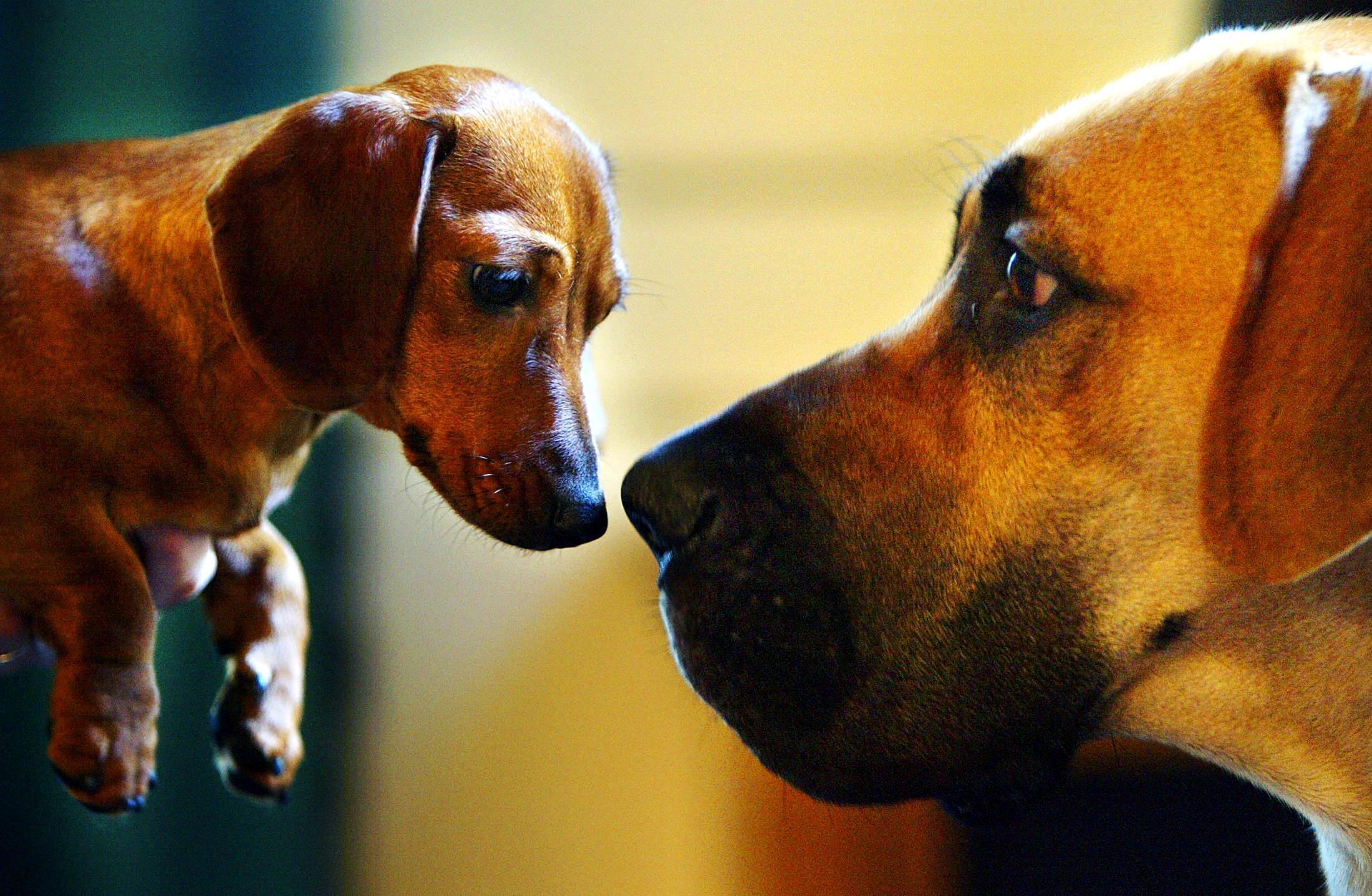Congressman off-base in ad claiming Fauci shipped COVID to Montana before the pandemic
KFF Health News is a national newsroom that produces in-depth journalism about health issues and is one of the core operating programs at KFF — an independent source of health policy research, polling, and journalism. This article was produced in partnership with PolitiFact.
“IT’S BEEN REVEALED THAT FAUCI BROUGHT COVID TO THE MONTANA ONE YEAR BEFORE COVID BROKE OUT IN THE U.S!” — ad from the Matt Rosendale for Montana campaign
A fundraising ad for U.S. Rep. Matt Rosendale (R-Mont.) shows a photo of Anthony Fauci, former director of the National Institute of Allergy and Infectious Diseases, behind bars, swarmed by flying bats.
Rosendale, who is eyeing a challenge to incumbent Sen. Jon Tester, a Democrat, maintains that a Montana biomedical research facility, Rocky Mountain Laboratories in Hamilton, has a dangerous link to the pandemic. This claim is echoed in the ad:
“It’s been revealed that Fauci brought COVID to the Montana one year before COVID broke out in the U.S!,” it charges in all-caps before asking readers to “Donate today and hold the D.C. bureaucracy accountable!”
The ad, paid for by Matt Rosendale for Montana, seeks contributions through WinRed, a platform that processes donations for Republican candidates. Rosendale also shared the fundraising pitch on his X account Nov. 1, and it remained live as of early February.
Rosendale made similar accusations on social media, during a November speech on the U.S. House floor, and through his congressional office. Sometimes his comments, like those on the House floor, are milder, saying the researchers experimented on “a coronavirus” leading up to the pandemic. Other times, as in an interview with One America News Network, he linked the lab’s work to covid-19’s spread.
In that interview clip, Rosendale recounted pandemic-era shutdowns before saying, “And now we’re finding out that the National Institute of Health, Rocky Mountain Lab, down in Hamilton, Montana, had also played a role in this.”
Rosendale’s statements echo broader efforts to scrutinize how research into viruses happens in the United States and is part of a continued wave of backlash against scientists who have studied coronaviruses. Rosendale is considering seeking the Republican nomination to challenge Tester, in a toss-up race that could help determine which party controls the Senate in 2025. Political newcomer Tim Sheehy is also seeking the Republican nomination for the Senate.
Rosendale proposed amendments to a health spending bill that would ban pandemic-related pathogen research funding for Rocky Mountain Laboratories and cut the salary of one of its top researchers, virologist Vincent Munster, to $1. The House has included both amendments in the Health and Human Services budget bill that the Republican majority hopes to pass. A temporary spending bill is funding the health department until March.
We contacted Rosendale’s congressional office multiple times — with emails, a phone call, and an online request — asking what proof he had to back up his statements that the Montana lab infected bats with covid from China before the outbreak. We got no reply.
Kathy Donbeck, of the National Institute of Allergy and Infectious Diseases’ Office of Communications and Government Relations, said in an email that the ad’s claims are false. Interviews with virologists and a review of the research paper published shortly before Rosendale’s assertions support that position.
Where this is coming from
Rosendale’s statements seem to stem from a Rocky Mountain Laboratories study from 2016 that looked into how a coronavirus, WIV1-CoV, acted in Egyptian fruit bats. The work, published by the journal Viruses in 2018, showed that the specific strain didn’t cause a robust infection in the bats.
The study did not receive widespread attention at the time. But on Oct. 30, 2023, the study was highlighted by a blog called White Coat Waste Project, which says its mission is to stop taxpayer-funded experiments on animals. Some right-wing media outlets began to connect the Montana lab with the coronavirus that causes covid.
Rosendale’s office issued an Oct. 31 news release saying the Wuhan Institute of Virology in China “shipped a strain of coronavirus” to the Hamilton lab. “Our government helped create the Wuhan flu, then shut the country down when it escaped from the lab,” Rosendale said.
It’s a different virus
Rocky Mountain Laboratories is a federally funded facility as part of NIAID, the nation’s top infectious disease research agency, which Fauci led for nearly 40 years.
According to the study and Donbeck’s email, the Montana researchers focused on a coronavirus called WIV1-CoV, not the covid-causing SARS-CoV-2. They’re different viruses.
“The genetics of the viruses are very different, and their behavior biologically is very different,” said Troy Sutton, a virologist with Pennsylvania State University who has studied the evolution of pandemic influenza viruses.
In a review of media reports on the Montana study, Health Feedback, a network of scientists that fact-checks health and medical media coverage, showed the virus’s lineage indicated that WIV1 “is not a direct ancestor or even a close relative of SARS-CoV-2.”
Additionally, the description of the coronavirus strain as being “shipped” suggests that it physically traveled across the world. That’s not what happened.
The Wuhan Institute of Virology provided the WIV1 virus’s sequence that allowed researchers to make a lab-grown copy. A separate study, published in 2013 by the journal Nature, outlines the origins of the lab-created virus.
According to the study’s methodology, the researchers used a clone of WIV1. An NIAID statement to Lee Enterprises, a media company, said the virus “was generated using common laboratory techniques, based on genetic information that was publicly shared by Chinese scientists.”
Stanley Perlman, a University of Iowa professor who studies coronaviruses and serves on the federal advisory committee that reviews vaccines, said Rosendale’s claim is off-base.
He said Rosendale’s focus on where the lab got its materials is irrelevant and serves “only to make people wary and scared.”
Rosendale’s efforts to prohibit particular research at Rocky Mountain Laboratories appear ill-informed, too. Rosendale targeted banning gain-of-function research, which involves altering a pathogen to study its spread. In her email, NIAID’s Donbeck said the Rocky Mountain Laboratories study didn’t involve gain-of-function research.
This type of research has long been controversial, and people who study viruses have said the definition of “gain of function” is problematic and insufficient to show when research, or even work to create vaccines, could cross into that type of research.
But both Sutton and Perlman said that, any way you look at it, the Rocky Mountain Laboratories study published in 2018 didn’t change the virus. It put a virus in bats and showed it didn’t grow.
And it had no effect on the covid outbreak a year later, first detected in Washington state.
Our ruling
Rosendale’s ad said, “It’s been revealed that Fauci brought COVID to the Montana one year before COVID broke out in the U.S!” The campaign ad and Rosendale’s similar statements refer to research at the Rocky Mountain Laboratories involving WIV1, a coronavirus that researchers say is not even distantly close in genetic structure to SARS-CoV-2, the virus that caused covid-19.
Rosendale’s claim is wrong about when the scientists began their work, what they were studying, and where they got the materials. The researchers began their work in 2016 and, although they were studying a coronavirus, it wasn’t the virus that causes covid. The Montana scientists used a lab-grown clone of WIV1 for their research. The first laboratory-confirmed case of covid was not detected in the U.S. until Jan. 20, 2020. Rosendale’s ad is inaccurate and ridiculous. We rate it Pants on Fire!
Sources:
Viruses, “SARS-Like Coronavirus WIV1-CoV Does Not Replicate in Egyptian Fruit Bats (Rousettus aegyptiacus),” Dec. 19, 2018
White Coat Waste Project, “Horror Show: Shady Zoo Sent Bats to NIH to Be Infected With a Wuhan Lab Coronavirus,” Oct. 30, 2023
MattForMontana X post, Nov. 1, 2023
Campaign ad, accessed Dec. 14, 2023
Rep. Matt Rosendale, House floor speech, Nov. 14, 2023
One America News Network, interview, accessed Dec. 14, 2023
Rosendale congressional office, “Rep. Rosendale Reacts to Reports That Wuhan Lab Shipped Coronavirus to Fauci-Run Lab in Hamilton Prior to Pandemic,” Oct. 31, 2023
National Institute of Allergy and Infectious Diseases, “History of Rocky Mountain Labs (RML),” accessed Dec. 14, 2023
Email exchange with NIAID, beginning Dec. 14, 2023
Statement from NIAID provided to Lee Enterprises, accessed Jan. 2, 2024
Nature, “Isolation and Characterization of a Bat SARS-Like Coronavirus That Uses the ACE2 Receptor,” Oct. 30, 2013
Ravalli Republic, “Rosendale Moves to Strip Rocky Mountain Lab Research Funding,” Nov. 17, 2023
Interview, Troy Sutton, assistant professor of veterinary and biomedical sciences at Pennsylvania State University, Jan. 5, 2024
Interview, Stanley Perlman, professor of microbiology and immunology and professor of pediatrics at the University of Iowa, Jan. 13, 2024
FDA, “Roster of the Vaccines and Related Biological Products Advisory Committee,” accessed Jan. 16, 2024
Health Feedback, “2018 Coronavirus Research in NIAID Montana Lab Is Unrelated to the COVID-19 Pandemic, Contrary to Claim by Fox News’s Jesse Watters,” last accessed Jan. 17, 2024
Email exchange with OpenSecrets, an independent research group tracking money in politics, beginning Jan. 30, 2024
CDC Museum COVID-19 Timeline, accessed Feb. 2, 2024
KFF Health News is a national newsroom that produces in-depth journalism about health issues and is one of the core operating programs at KFF — an independent source of health policy research, polling, and journalism. Learn more about KFF.









 The island is also home to perhaps the world's largest colony of chinstrap penguins, seabirds, seals and sea lions © JUAN BARRETO / AFP/File
The island is also home to perhaps the world's largest colony of chinstrap penguins, seabirds, seals and sea lions © JUAN BARRETO / AFP/File The volcano has been active for thousands of years, erupting most recently in 1967, 1969 and 1970, devastating British and Chilean bases and forcing the evacuation of an Argentine base © Juan BARRETO / AFP/File
The volcano has been active for thousands of years, erupting most recently in 1967, 1969 and 1970, devastating British and Chilean bases and forcing the evacuation of an Argentine base © Juan BARRETO / AFP/File The island, first visited by British sealers in 1820, has a rich history, with abandoned scientific bases and an old whaling station rusting in the icy air © JUAN BARRETO / AFP/File
The island, first visited by British sealers in 1820, has a rich history, with abandoned scientific bases and an old whaling station rusting in the icy air © JUAN BARRETO / AFP/File Deception Island is a popular spot for tourist cruises to Antarctica © JUAN BARRETO / AFP/File
Deception Island is a popular spot for tourist cruises to Antarctica © JUAN BARRETO / AFP/File

 French bulldogs are extremely popular dogs but their short faces come with health problems © Jack TAYLOR / AFP/File
French bulldogs are extremely popular dogs but their short faces come with health problems © Jack TAYLOR / AFP/File Small but mighty: miniature dachshunds have the third-longest life expectancy of any dog © ADRIAN DENNIS / AFP/File
Small but mighty: miniature dachshunds have the third-longest life expectancy of any dog © ADRIAN DENNIS / AFP/File